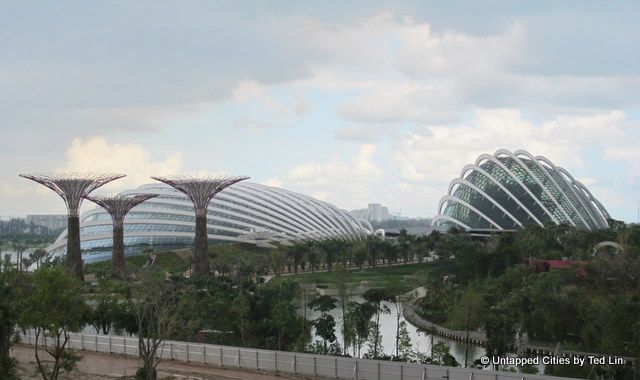Last Chance to Catch NYC's Holiday Notalgia Train
We met the voices of the NYC subway on our nostalgia ride this weekend!


Last week at the University of Chicago Booth School of Business campus in Singapore, Untapped Cities listened to a presentation by Koh Buck Song, consultant and author of Brand Singapore. Perhaps unsurprising for a country that is known for free trade and commerce, it was interesting to hear how the government has focused on carving out a niche and building its global brand in conjunction with national development, through several underlying initiatives.
Singapore Airlines, one of Lion City’s oldest and most iconic brands, was created to take advantage of Singapore’s pivotal geographic location with a particular focus on the Kangaroo Route, the air travel market between Europe and Australia which cannot be flown non-stop.
Since the national airline’s creation in 1972, Singapore Airlines has since become one of the most profitable and awarded airlines in the world. Tied to the success of Singapore Airlines, Changi International Airport has too developed into a world-class airport, winning it several awards.
In tandem with the airline, the Singapore Girl was created in 1972, and she has donned the Sarong Kebaya (traditional blouse-dress combination worn by women of several Southeast Asian nations) providing superior service for nearly forty years. While the Singapore Girl has been occasionally updated, as you see in the commercials below her image and brand has stayed the same throughout her existence.
1973 Singapore Girl commercial:[youtube https://www.youtube.com/watch?v=RrI8DSCmRb4?fs=1&feature=oembed]
2011 Updated Singapore Girl commercial:
[youtube https://www.youtube.com/watch?v=fNEJrd6GkSY?fs=1&feature=oembed]
What makes Singapore unique is that the different government ministries have their own ability to create national brands. For instance, the Ministry of Finance has worked to develop Singapore into a global financial centre. The resulting impact on the urban planning of Singapore is that the skyline of the central business district is now dominated by banks and other financial institutions. If you look at the newest buildings to be constructed in recent years, One Raffles Quay, Marina Bay Financial Centre, Asia Square and Ocean Financial Centre are all anchor tenanted by leading banks, and have given the area a spectre of shiny-windowed buildings.
Similarly, the Singapore Tourism Board has been active in recent years with the creation of the Singapore Flyer and Integrated Resorts. Marina Bay Sands and Resorts World Sentosa are now included as the most iconic destinations in Singapore. Marina Bay Sands has a large convention center with a focus on the MICE (meetings, conventions, conferences and exhibitions) industry. Just this past weekend, Marina Bay Sands both brought Elton John to Singapore and hosted the 20th Annual World Orchid Conference.
However, this is not to say that all government initiatives have resulted in total success. A few years ago, Singapore wanted to develop itself into a medical tourism hub in a co-effort between the Economic Development Board and the Ministry of Health. Despite its endevour, it eventually lost its position to Thailand which was able to offer an overall cheaper solution when combining both medical and long-term stay costs.
Looking at the future, the latest vision of the Singapore brand is to modernize the country’s moniker from the Garden City to City in a Garden. The highlight will be Gardens by the Bay scheduled to open in June 2012. The Flower Dome at Gardens by the Bay was recently opened to the public for a sneak preview in conjunction with the 20th Annual World Orchid Conference.
The Flower Dome and Cloud Forest at Gardens by the Bay:

Although the urban sprawl continues in Singapore, with the population surpassing the five million mark, the government plans for more parks which includes the proposal for a connected park starting from Tanjong Pagar and reaching to Marina Bay. In the civic district, the previous City Hall and Supreme Court Buildings are undergoing a gut renovation to become the future home for the National Art Gallery, set for 2015.
For nearly fifty years, there has been a direct correlation between the branding of Singapore and its impact on the urban planning in Singapore, and it is not resting on its laurels. The development of Marina Bay area and the upcoming National Art Gallery are the latest but by no means the last of this correlation.
Subscribe to our newsletter